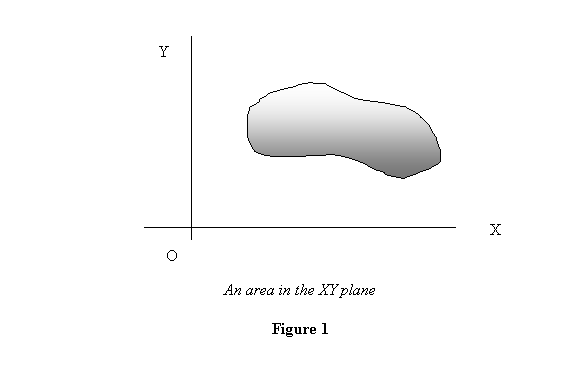Having deal with trusses and frictional forces, we now
change gears and go on to discuss some properties of
surfaces mathematically. Of course we keep connecting
these concepts to physical situations.
The first thing that we discuss is the
properties of surfaces. This is motivated by the fact
is general the forces do not act at a single point but
are distributes over a body. For example the gravitational
force pulling an object down acts over the entire object.
Similarly a plate immersed in water, for example has
the pressure acting on it over the entire surface. Thus
we would like to know at which point does the force effectively
act? For example in the case of an object in a gravitational
field, it is the centre of gravity where the force acts
effectively. In this lecture we develop important mathematical
concepts to deal with such forces. Let us start with
the first moment of an area and the centroid .
First moment of an area and the centroid: We
first consider an area in a plane; let us call it the
X-Y plane (see figure 1).

The first moment MX of
the area about the x-axis is defined as follows. Take
small area element of area ΔA and multiply
it by its y-coordinate, i.e. its perpendicular distance
from the X-axis, and then sum over the entire area; the
sum obviously goes over to an integral in the continuous
limit. Thus

Similarly the first moment MY of
the area about the y-axis is defined by multiplying
the elemental area ΔA by its x-coordinate,
i.e. its perpendicular distance from the Y-axis, and
summing or integrating it over the entire area. Thus

This is shown in figure 2.